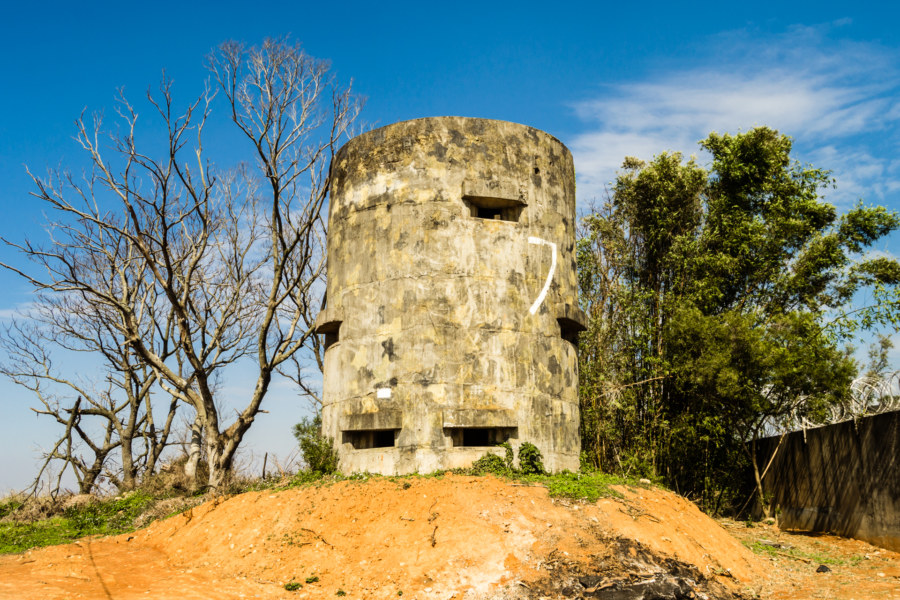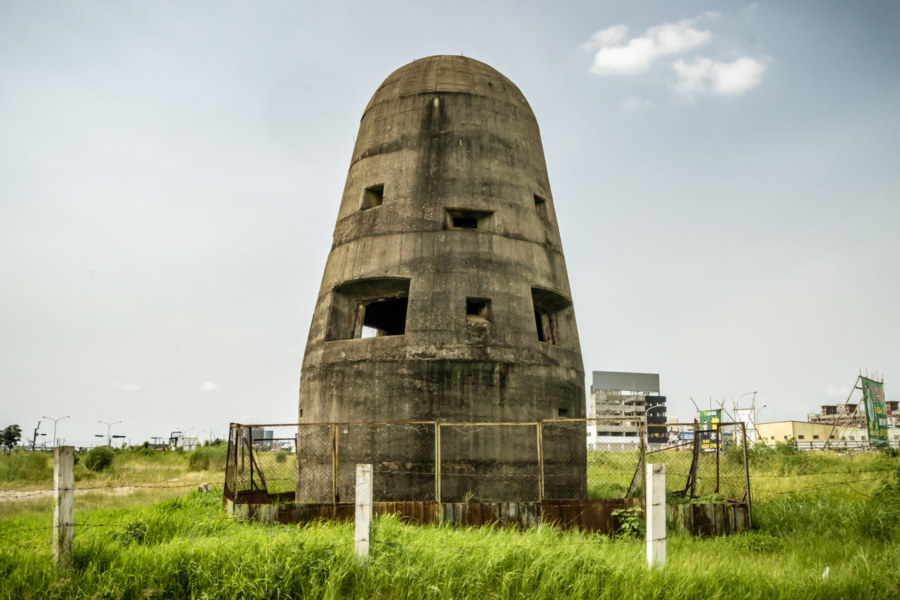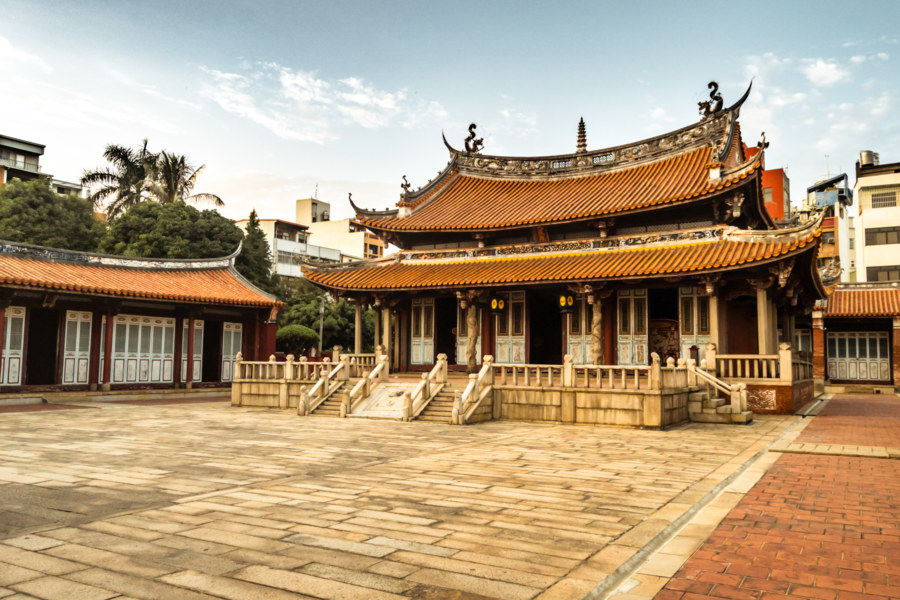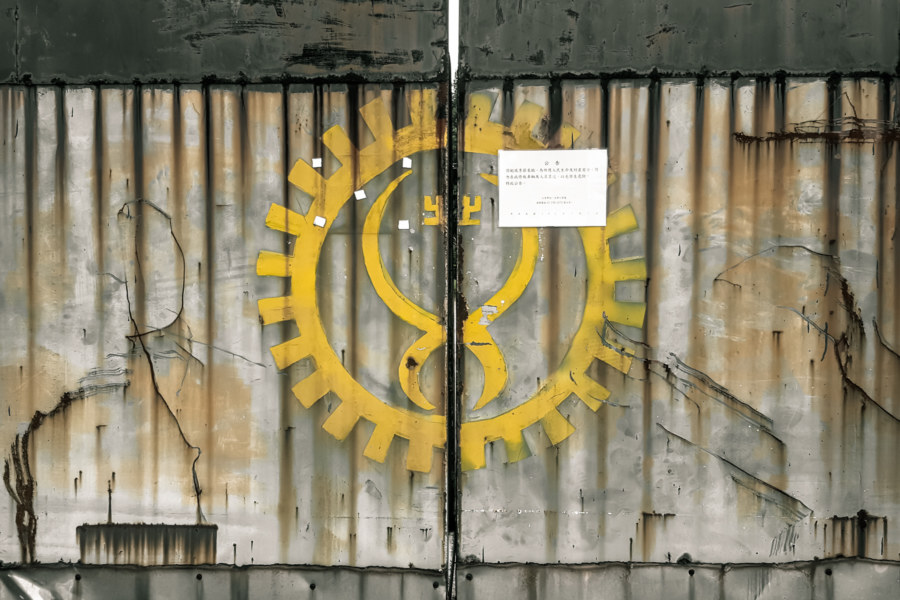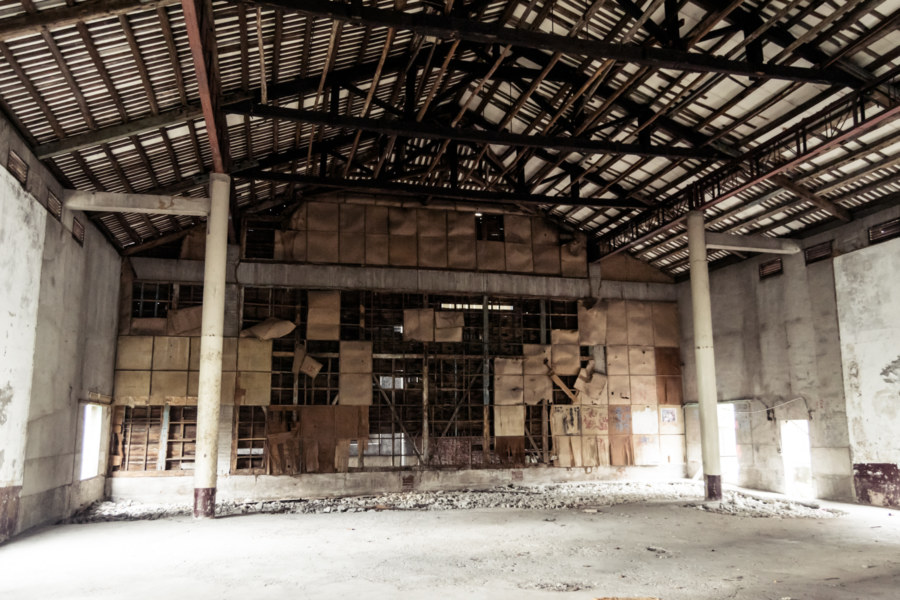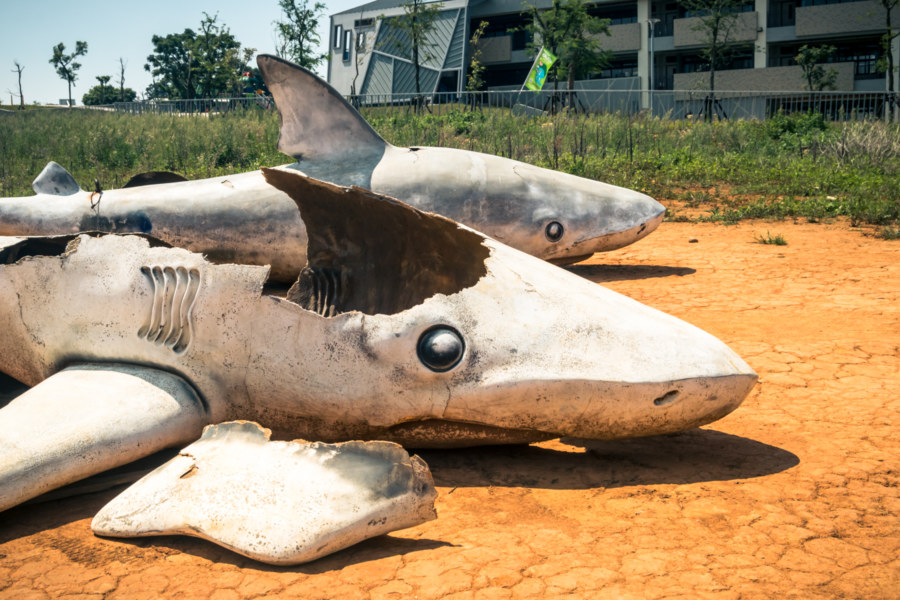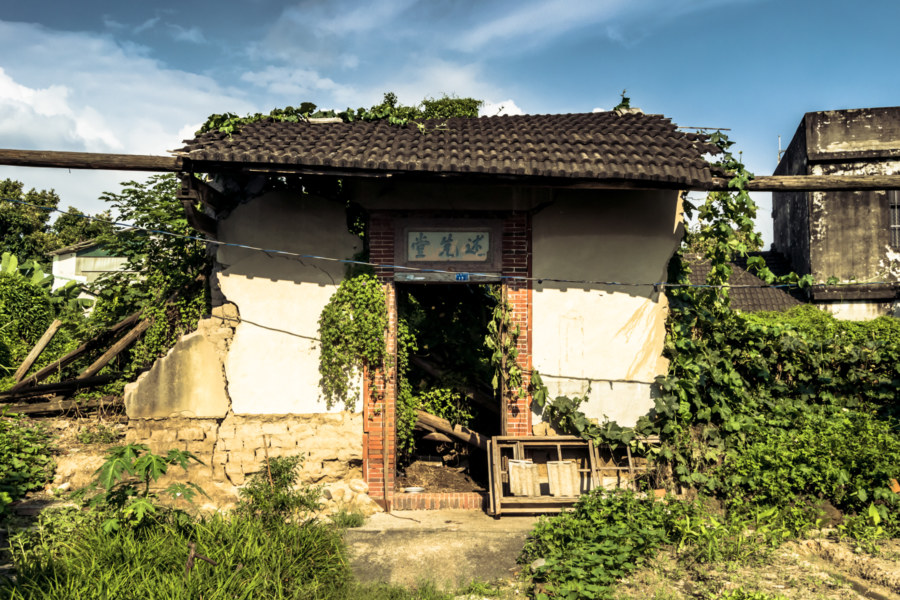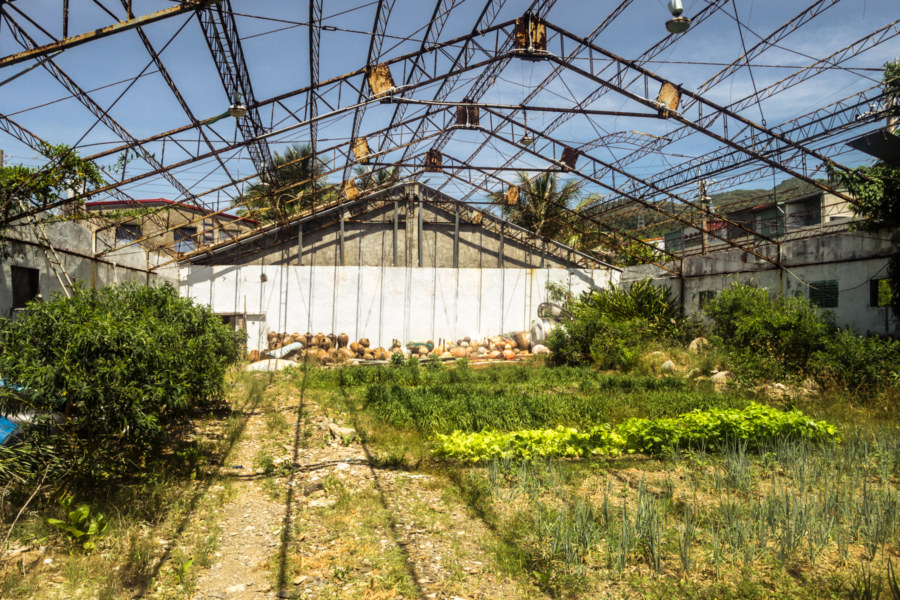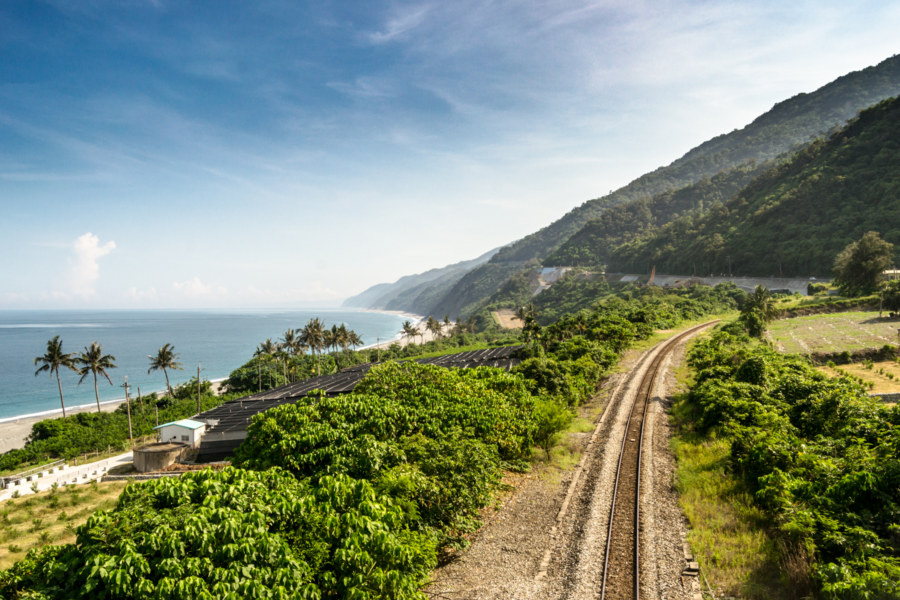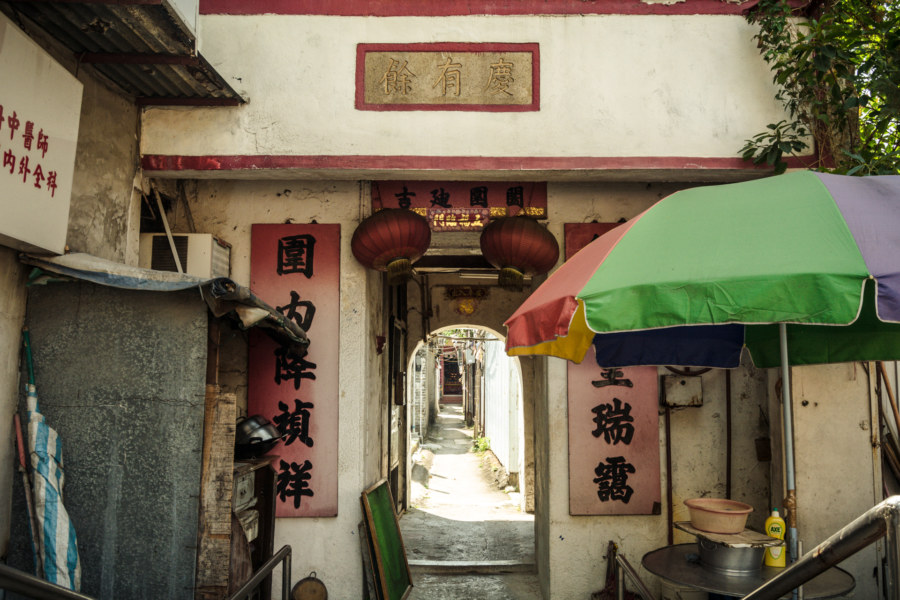Dàdù Plateau (大肚台地) is a geographic feature of great strategic importance to the defense of central Taiwan. It overlooks the Qīngshuǐ Coastal Plain (清水平原) and occupies high ground on the far edge of the Taichung Basin (台中盆地), home to the majority of the population of Taichung, the third most populous metropolitan area in the nation. The entire length of the plateau is peppered with military facilities from the massive Ching Chuan Kang Air Base (空軍清泉崗基地) in the north to Chénggōng Ridge (成功嶺) down south. In between one will find a number of abandoned or disused bunkers, gun towers, and blockhouses. This post focuses on seven anti-airborne fortifications located in the central part of the plateau starting with the #7 Anti-Airborne Fort (七號反空降堡), my introduction to this cluster of ruins.
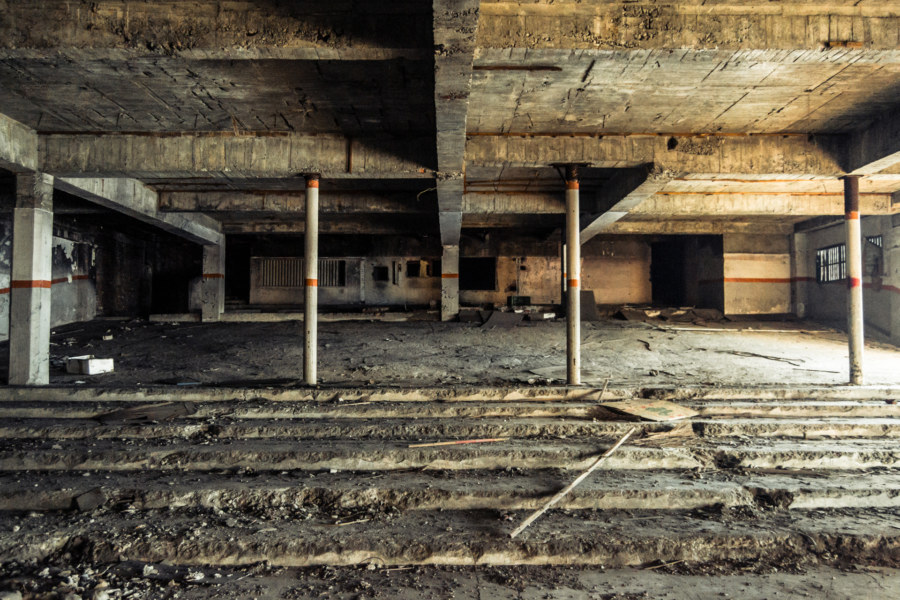
Urban exploration or urbex (Chinese: 城市探險 or 廢墟探險; Japanese: haikyo 廃墟) is the exploration of manmade structures and artificial environments, particularly those found beyond the margins of everyday society. This includes abandoned and disused spaces but also rooftops, underground infrastructure, and many other places not normally open to casual examination. Despite the name the practice is not limited to cities, nor is the focus exclusively on abandoned places. Urbex culture varies across the globe but one unifying convention most explorers adhere to is "take nothing but pictures, leave nothing but footprints".
Subterms
Taichung Aerodrome Gun Tower 臺中飛行場機槍堡
Not much remains of the former Taichū Aerodrome 臺中飛行場, a Japanese colonial era airbase originally built in 1911 on the northwestern periphery of central Taichung. The airbase saw a lot of action in World War II and several kamikaze units were stationed there in the final months of the war. After the arrival of the KMT it was used as a hub for aviation research and development before entering into civilian use in the 1970s as Shuǐnǎn Airport 水湳機場. In 2004 operations were transferred to the nearby Taichung Airport 台中航空站 and, over the following decade, the former Japanese airbase was completely demolished as part of an ongoing city-wide urban renewal plan. The only building spared was a lone gun tower built in 1940, formally designated a historic site in 2006, and officially known as the Former Japanese Army Taichung Aerodrome Gun Tower 原日軍臺中飛行場機槍堡.
Postcards From Changhua City 2 彰化市明信片二號
Not long after moving to the administrative capital of Changhua in 2014 I published a collection of photographs entitled Postcards from Changhua City. All of the photos in that post were shot in my first few months of residency but I ended up staying for half a year. In that time I gathered more than enough material for a sequel while making my daily rounds. So here it is: more photos from my time in Changhua City, a historic town in central Taiwan. As before, additional information and links are included in the caption for each photo, where available.
Traces of an Army Maintenance Depot
Xinyi is now one of the most expensive and upscale parts of Taiwan but it hasn’t always been that way. Decades ago it was an undesirable area on the edge of the city with a significant military-industrial presence, traces of which still remain if you know where to look. The open expanse of parks and parking lots around the intersection of Xìn’ān Street (信安街) and Wúxìng Street (吳興街) immediately to the west of Taipei Medical University (臺北醫學大學) is one such trace.
Xinpu Xinxing Theater 新埔新興戲院
Recently I visited Xinpu, a small Hakka town in the hills of Hsinchu, Taiwan, alongside fellow photographer and blogger Josh Ellis. I was curious to confirm reports of a historic theater along the former Entertainment Street 娛樂街 but the location in my notes was occupied by a construction site. Forging on, we continued down the road and were soon rewarded by the sight of something that I wasn’t expecting: Xīnxīng Theater 新興戲院. In hindsight it wouldn’t be an “entertainment street” without more than one cinema, would it?
Taichung Shark Cemetery 台中鯊魚墳場
Taichung Shark Cemetery (台中鯊魚墳場) is an unlikely roadside attraction near Tunghai University (東海大學) in Xitun, Taichung. There is no great mystery here—a nearby restaurant and banquet hall by the name of Tong Hai Fish Village (東海漁村) dumped a bunch of junk in this farmer’s field sometime prior to 2009, and since then it has become a popular place for young Taiwanese to visit and take photos.
Shuidui Settlement 水碓聚落
Taichung is undergoing a massive transformation as vast tracts of rural-industrial sprawl are cleared to make way for new developments around the high-speed rail station 高鐵台中站 and the future Taichung Metro system, particularly in Beitun, Nantun, and Wuri. Google’s satellite maps are out of sync with the streets, many of which are so new that they appear only as ghostly lines coursing through the former rice paddies. With large parts of the urban periphery slated for wholesale demolition and renewal many grassroots organizations have formed to preserve cultural assets found in these doomed territories—as was the case with the Shuinan Tobacco Barn 水湳菸樓. Today I chanced upon another example: Shuǐduì Jùluò 水碓聚落, a rare 17th century Hakka settlement in Nantun with an ambiguous future.
Dawu Theater 大武戲院
I stumbled upon the remains of Dawu Theater 大武戲院 while on a bicycle tour of southern Taiwan in 2015. Located in the small town of Dawu, it was one of approximately 36 theaters operating in Taitung in the cinematic heyday of the 1960s and 70s, all of which are now abandoned or destroyed. This particular theater was in business from 1968 to 1983 and allegedly accommodated as many as 1,200 patrons, earning it the title of nánbàtiān 南霸天, or “southern tyrant”, for how it dominated the industry in the southernmost part of the county. Hardly anything remains after three decades of exposure that would identify Dawu Theater apart from a small sign in the antechamber.
Southern Taiwan Ride 2015: Dawu to Taitung City
My last big day of riding around southern Taiwan in June 2015 began in Dawu, Taitung, with only about 55 kilometers to go before arriving in Taitung City. I had been out in the sun far too much the previous day and was feeling rather sluggish and a bit sick so I didn’t end up taking any side trips into the mountains as I made my way north. Even so, the scenery was fantastic, and while I won’t have as much to write about this particular day of my trip, I have plenty of beautiful photographs to share.
Nga Tsin Wai: The Last Walled Village of Kowloon
Nga Tsin Wai Village 衙前圍村 is widely known as the last walled village of Kowloon. Located not far from the former location of the infamous Kowloon Walled City 九龍城寨, the village traces its history back to the 1352 founding of its modest Tin Hau Temple 天后宮. It was fortified in 1724 to defend against bandits and pirates but has, in modern times, lost the moat, walls, and watchtowers that once protected residents from harm. As the very last of its kind in the urban heart of Hong Kong it has become a flashpoint for conflict between the Urban Renewal Authority and the many activist groups and citizens passionate about preserving what remains of Kowloon’s cultural heritage.
